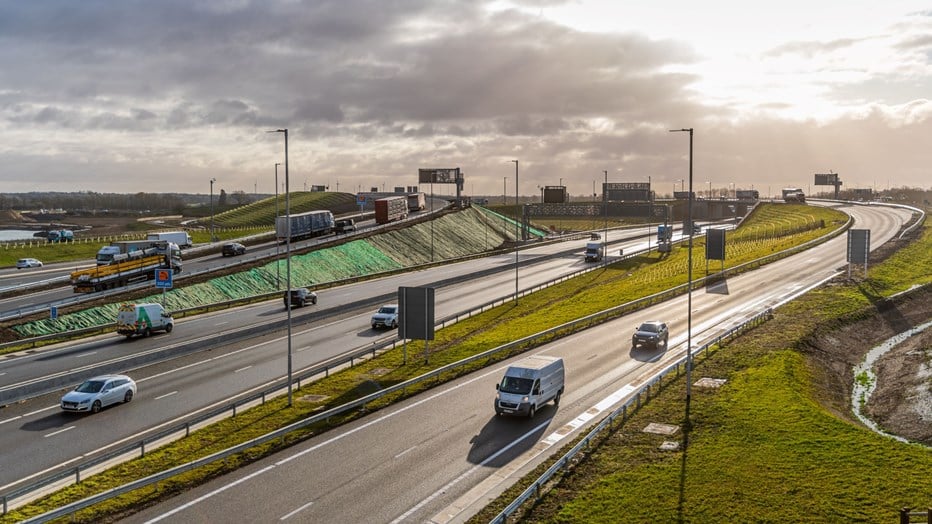The project
The A14 is a vital transport corridor linking the major ports in East Anglia with the West Midlands and the north. It carries a high level of commuter and long-distance traffic and provides a strategic link between the A1 and the M11 motorway.
Carrying over 85,000 vehicles per day, a quarter of which are HGV traffic, previously this stretch was congested, slow and prone to accidents, stifling economic growth and negatively impacting the environment.
As the largest National Highways project in the UK at the time, the project aimed to:
- relieve congestion
- improve safety
- boost economic growth
- connect people
- leave a positive legacy.
A collaborative approach
Skanska played a leading role in the A14 Integrated Delivery Team (IDT), a joint venture between Skanska, Costain and Balfour Beatty, with National Highways. The delivery team worked closely together to deliver and coordinate the activities of 14,000 people, involved in this complex project through the supply chain.
Setting new standards for delivery
The scheme involved a major upgrade to the 21 mile stretch of the A14, including a new 12-mile bypass for Huntingdon and widening of the A14 and A1. It included the construction of 34 new bridges and structures and a host of new and improved junctions. Use of digital techniques was critical to meeting the project’s ambitious goals.
This included the creation of a digital ‘one version of the truth’, used by the design team and supply chain partners to manage the project. Drones were used to gather up-to-date survey, environmental and project monitoring data.
Offsite manufacturing and modular construction underpinned delivery of the 750-metre long River Great Ouse viaduct, spanning the river’s environmentally rich flood plain. Locating an off-site temporary factory, known as a flying factory, close to the project to create the concrete slabs meant construction of the viaduct was faster, safer and the environmental impact was kept to a minimum.
Achievements
The project was a major success against all criteria. It was finished eight months ahead of schedule, with the Huntingdon bypass section completed a full year ahead of schedule. It’s won numerous awards including Rescue Project of the Year in the 2019 Current Archaeology Awards and two Highways Awards in 2017 for Team of the Year – Procurement & Supply Chain, and the Judges overall winner award.
The scheme benefits the local economy by cutting up to 20 minutes off journeys, connecting communities and improving the environment for residents and visitors by applying sustainable solutions at every opportunity.
The A14 passes through areas of rich archaeological heritage, and working with archaeologists the team ensured artefacts and learning were not lost beneath the diggers.
The delivery team made a real difference to local communities, working collaboratively with local schools, re-start charities and local stakeholder to create opportunities and provide employment.







